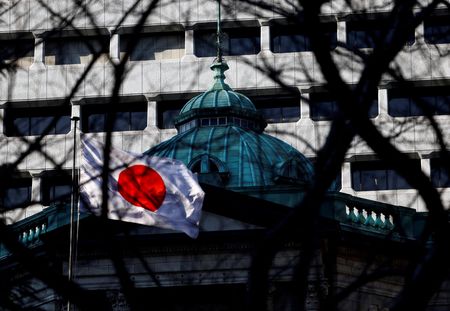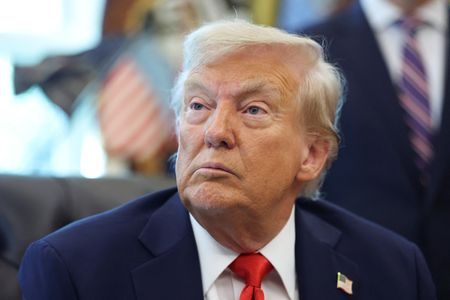By Leika Kihara
TOKYO (Reuters) – The Bank of Japan is likely to raise interest rates again this year and see borrowing costs reach levels deemed neutral to the economy by the end of 2027, a senior International Monetary Fund official said on Thursday.
While there is significant uncertainty around the estimates, the IMF sees Japan’s neutral rate to be in a band of 1% to 2% with a mid-point of 1.5%, said Nada Choueiri, deputy director of the IMF’s Asia-Pacific Department and its mission chief for Japan.
Japan’s economy is likely to expand 1.1% this year as rising wages underpin consumption and stay on course to sustainably achieve the central bank’s 2% inflation target, she said.
“Our baseline remains a story where we see increasingly strengthened domestic demand underpinned by continued recovery in real wage growth,” Choueiri told Reuters in an interview.
“If (the economy) proceeds as we expect, we see the BOJ continuing to implement gradual policy rate increases” she said.
After exiting a massive monetary stimulus last year, the BOJ raised short-term interest rates to 0.5% from 0.25% in January on the view that Japan was on the cusp of durably achieving its 2% inflation target.
BOJ Governor Kazuo Ueda has signalled his resolve to keep raising rates to levels deemed neutral to the economy, which the bank estimates are in a range of 1% to 2.5% on a nominal basis.
“We are supportive of the course of monetary policy, how the BOJ is handling it. We think they’re on the right track,” Choueiri said, adding the BOJ’s interest rate hikes should be gradual and flexible to ensure a pick-up in domestic demand.
“We see policy rate increases beyond 0.5% by the end of this year,” she said. “We see the policy rate going to neutral level by the end of 2027.”
Risks to Japan’s economy are skewed to the downside as heightened uncertainty and geopolitical fragmentation could hurt global demand and affect companies with global supply chains, she said.
On the fiscal front, the IMF is calling for Japan to remove energy subsidies and shift spending to areas with a clearer impact on long-term growth, Choueiri said.
“We see room to improve spending, to make it more growth-friendly and focus more on the areas with high multiplier, such as steps to make private investment more efficient,” she said.
“More importantly, we see a need to put in place a clear plan with policies to start bringing the deficit down, so that the debt ratio declines over the coming years,” Choueiri added.
Prime Minister Shigeru Ishiba’s minority coalition is under pressure to boost spending and tweak tax rules that could lead to reduced revenues, putting additional strain on Japan’s already tattered finances.
The BOJ’s expected interest rate hikes and a gradual tapering of its huge bond buying are likely to push up bond yields and increase the cost of funding Japan’s huge debt.
The risk of Japan facing an abrupt spike in bond yields is low for now due to the very gradual pace of the BOJ’s expected rate hikes and quantitative tightening, Choueiri said.
But the government must seize the narrowing window of opportunity to speed up fiscal reform given Japan’s huge debt-to-gross domestic product ratio, she said.
“Now is the time to prepare a fiscal consolidation plan and start implementing it incrementally, because we don’t want the government to be in a position to have to adjust abruptly down the road. That wouldn’t be good.”
(Reporting by Leika Kihara; Editing by Jamie Freed)










